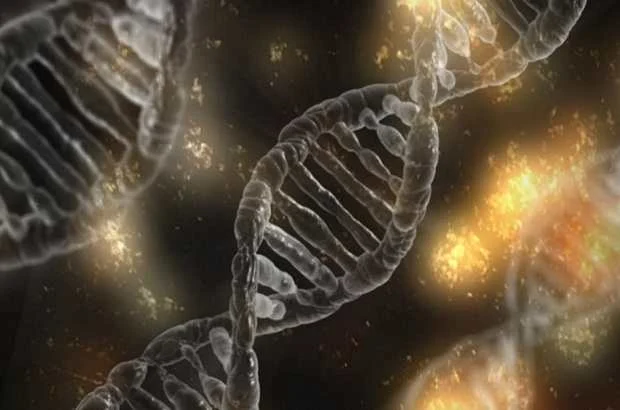Scientists
have found that viperin's expression inhibits a broad spectrum of
disease-causing viruses, including hepatitis C, rabies and HIV-1 and described
a novel approach for attacking many disease-causing viruses and finally they
have discovered the secret of the gene success.
 |
| How the antiviral gene works? |
Scientists
Discover How Antiviral Gene Works
Antiviral gene
Antiviral genes are medicines that affect the replication of
viruses, either at the stage of DNA synthesis or at a late stage of protein
synthesis. The majority of antiretroviral drugs and HIV are antifungal
tablets and are structurally similar to natural compounds.
In order to interfere with the synthesis of viral DNA or protein synthesis at a later stage, these anti-metabolites must be transformed into active forms, which are usually triphosphate derivatives.
For example, ZibZidovudine (AZT) is subjected to phosphorylation
by host cell kinase enzymes to form nucleotide analogs that can inhibit DNA
polymerase. Staphylococcal toxicity is caused by the fact that viral DNA
polymers are more sensitive to inhibition of antimicrobial enzymes (host).
Acyclovir is more toxic than other medicines that need to be perfected only by host cell enzymes. This excess isotoxicity is caused in part by the primary phosphorylation of aciclovir by thymidine kinase of the virus, which is absent in the non-coagulated cells.
One of the most important modern trends in the chemical
treatment of viruses is the joint treatment that is similar to the chemical
treatment of cancer, as the treatment of pharmacokinetics, give greater effect
and protect or delay emergency resistance.
The limited success of the Single-Tablet Regimen for AIDS patients was the main promoter of chemical involvement. Treatment with three tablets was possible before the symptoms of HIVs, and usually included two ways:
Non-nucleoside reverse
transcriptase inhibitors (NNRTIs) rather than protease
inhibitors.
highly active antiretroviral therapy (HAART) includes
a therapeutic partnership that can slow down or reverse the viral load that
usually occurs in the course of disease progression.
In many patients with HAART, HAART slows or reverses
competition in CD4 cells and decreases the incidence of opportunistic
infections.
How Antiviral Gene Works
 |
| How the antiviral gene works? |
Scientists Discover How Antiviral Gene Works
Recently, Scientists at Albert
Einstein College of Medicine have found in their research that viperin's
expression inhibits a broad spectrum of disease-causing viruses, including
hepatitis C, rabies and HIV-1 and described a novel approach for attacking
many disease-causing viruses and finally they have discovered the secret of the
gene success.
The enzyme codes for generates a
compound that stops viruses from replicating and the compound that
is called ddhCTP disrupts the replication machinery of Zika virus. ddhCTP
is highly effective at inhibiting the replication of three different
strains of Zika virus -- a mosquito-borne virus that causes an infection for
which there is currently no treatment.
Amendment in ddhCTP can make it even
more powerful. The next step is to test the compound against a wide range of
viruses.
A famous researcher Steven C. Almo,
Ph.D., professor and chair of biochemistry at Einstein and Pennsylvania State
University said “Nature has given us a template for creating a powerful and
safe antiviral compound.
He added in his speech“We've
been living with ddhCTP for many millions of years; ddhCTP appears to be
"a completely novel drug scaffold" for designing antiviral drugs.
"We are hoping that we can generate the forms of this molecule which will
be even more effective”.
An assistant professor in Dr. Almo's
lab Tyler Grove explained " Years ago, humans and other mammals
possess an antiviral gene called RSAD2 the gene that codes for the enzyme
viperin and prevents a remarkable range of viruses from
multiplying.
Depending on these premises, drugs
may have a favorable safety profile. Those medicines will be based on the
naturally occurring molecule so that they have some off-target effects - a
common problem with a man-made nucleotide analog, which can be effective but
also quite poisonous.
Long time ago, scientists developed
the mechanisms to prevent it from interfering with the replication of their own
cells and they proposed several principles for how viperin puts its
anti-viral effects, but exactly how it was a mystery.
Current studies show that the
viperin converts a nucleotide named Cytidine triphosphate(CTD) into a
structurally similar compound, or analog: nucleotide ddhCTP - the first
molecule mentioned which prevents viral replication. Conversion of CTP to
analog, ddhCTP, throws a monkey wrench into the virus's ability to copy its
genome. The analog's structure differs only slightly from CTP's -- but the
difference is sufficient to bring viral replication to a halt.
Mammalian cells that become infected
with viruses and other pathogens release indicator proteins called
interferon. The interferons, in turn, trigger
the expression of hundreds of gene.
Dr. Almo said at the end of the
speech "Based on our enzymology studies ddhCTP may be able to inhibit all
flaviviruses, a class of viruses that includes Zika as well as dengue, West
Nile, yellow fever, Japanese encephalitis, and hepatitis C."
Story Source: ScienceDaily, June 2018.
<www.sciencedaily.com/releases/2018/06/180622174513.htm>
Journal
Reference: Nature, "A naturally occurring antiviral ribonucleotide encoded by the human genome"
Tags
antiretroviral therapy
antiviral drugs
antiviral drugs for hiv
antiviral gene
bacteria
health
medicine
microorganisms

Useful article
ReplyDelete